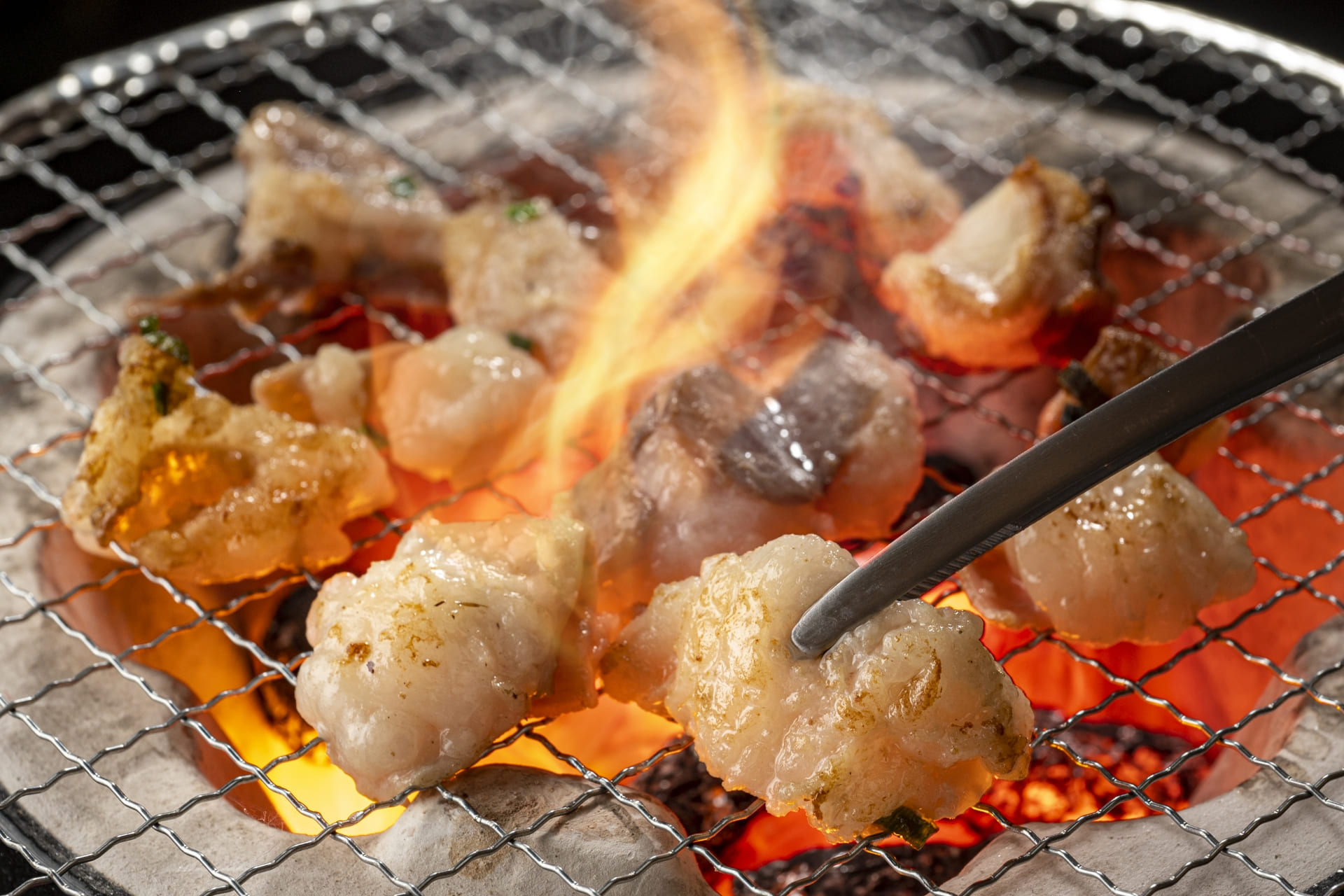For food lovers who've already explored the realms of sushi, ramen, and tempura, "horumon" offers a bold and fascinating next step into Japanese cuisine. Horumon refers to beef (or pork) offal—internal organs that have become beloved staples in yakiniku (Japanese BBQ) and izakayas (Japanese-style pubs). The term comes from the Kansai dialect "horumon" (literally “things to throw away”), as these parts were once discarded. But today, their rich flavors and unique textures have earned them a cult following among adventurous eaters.
1. What is Horumon?
Horumon is more than just offal—it’s a culinary expression of Japan’s deep-rooted mottainai philosophy, which values using every part of an animal without waste. Grilled or stewed, horumon offers an array of textures—from chewy to melt-in-your-mouth—and each cut has its own character. In yakiniku restaurants, it’s often grilled to your preferred doneness, turning each bite into a flavorful, unforgettable experience.
2. Guide to Horumon Cuts
Tongue (Tan)
A favorite even among international visitors, beef tongue is typically thin-sliced, lightly salted, and served with a squeeze of lemon. It's tender with a refreshing flavor—perfect as a starter. Variations like thick-cut or scallion-topped versions are also popular.
Cheek (Tsurami or Kashira)
From the cheek and jaw area, this cut is well-marbled and pleasantly chewy due to the muscle use. It's juicy when grilled and pairs beautifully with tare (Japanese BBQ sauce). A must-try for fans of rich, beefy flavor.
Esophagus (Nodosuji or Sukimi)
A rarer cut with a firm, springy bite. The more you chew, the more flavor it releases. It goes especially well with sauce and a cold beer—definitely a choice for horumon connoisseurs.
Trachea (Urute)
This cartilage-heavy section is all about the crunch. Mild in flavor, it's best grilled with spicy miso or garlic-based sauces to bring out its character. Ideal for texture lovers.
Sweetbread (Shibire)
Known as ris de veau in French cuisine, this luxurious cut is creamy, tender, and melts in your mouth. Lightly grilled, it becomes crispy on the outside and soft inside. It’s rare, so don’t miss the chance to try it.
Outside Skirt (Harami)
Though technically offal, it resembles lean red meat in both look and taste. It's juicy, tender, and lower in fat, making it a hit with health-conscious diners. Delicious with either salt or sauce.
Hanging Tender (Sagari)
Also from the diaphragm like harami, but softer and more flavorful. Often pre-marinated to enhance its rich taste. A favorite among red meat lovers.
Heart (Hatsu)
Lean, springy, and mild in flavor. Packed with iron and popular among health-conscious eaters. Often served as skewers or in tare sauce—great for horumon beginners.
Heart Root (Korikori or Hatumoto)
This cut, located at the base of the heart, is named for its signature crunch. A meaty texture with a satisfying bite, especially when seasoned boldly. Loved by many male diners.
Lung (Fuwa or Basa)
Light and airy due to its structure, with a texture unlike any other. Usually simmered in strong miso or soy-based sauces to balance its distinctive flavor. For advanced horumon fans.
First Stomach (Mino)
Thick and chewy, it crisps up beautifully on the grill. A fattier version called "Mino Sand" is particularly rich and flavorful. A top pick for texture chasers.
Second Stomach (Hachinosu)
Named for its honeycomb appearance, it’s slightly springy and often used in stews or stir-fries. When prepped properly, it’s free of odor and absorbs flavors well.
Third Stomach (Senmai)
Thin and crunchy, often blanched and served with vinegar miso. Its clean flavor and striking look make it a social media favorite.
Fourth Stomach (Gaira or Akasenmai)
Fatty and rich, this cut grills up with irresistible aroma and flavor. A bit of a wild card, but adored by those who like a punchy bite.
Liver (Reba or Kimo)
Iron-rich and nutrient-packed, liver has a deep, earthy flavor. When fresh, it’s mild and needs just a light sear. Available in both salt and sauce styles.
Pancreas (Tachigimo)
Silky, fatty, and smooth. Best grilled lightly to keep the inside soft and creamy. Rare and worth grabbing when spotted on a menu.
Kidney (Mame)
With proper prep, its unique aroma disappears, leaving a firm and tasty bite. Excellent when paired with a flavorful sauce.
Small Intestine (Himo or Kotetchan)
Extremely fatty and juicy—bite into it and you'll get an explosion of rich flavor. One of the most beloved horumon cuts.
Marucho (Small Intestine)
Recognizable by its round shape, this cut bursts with savory fat when grilled. Bold and full-bodied, it can handle strong seasonings.
Large Intestine (Shimacho or Tecchan)
Thicker and more elastic, with a satisfying chew. High in fat and deliciously charred on the grill, it pairs perfectly with tare.
Rectum (Teppou)
Named for its tube-like shape, this cut has a crisp bite and is best enjoyed with a rich sauce. Be careful not to overcook it.
Cecum (Mouchou)
Tender and mild with very little odor, making it ideal for stews or hot pots. A rare find and surprisingly versatile.
Uterus (Kobukuro)
Bouncy and smooth, often grilled on skewers or served with sauce. Light in flavor and popular among female diners.
Achilles Tendon (Akiresu)
When simmered slowly, it becomes soft and gelatinous. Rich in collagen, it’s perfect for soups and stews—also favored for its beauty-boosting properties.
Tail (Te-ru)
Full of collagen, beef tail creates a deeply flavored broth when simmered. Common in oxtail soups and stews, especially comforting in colder months.
3. Final Thoughts
Horumon offers a truly immersive experience into Japan’s culinary traditions. While some cuts may seem unfamiliar at first, a single bite can turn hesitation into delight. Each part tells its own story through texture and taste. During your stay in Japan, don’t miss the chance to explore the world of horumon—you might just discover a new favorite that you never expected.
What is Horumon?

Search Restaurants by Popular Cuisines





